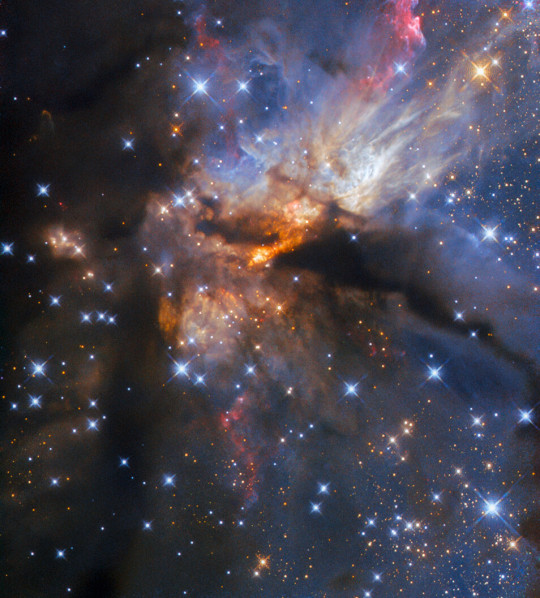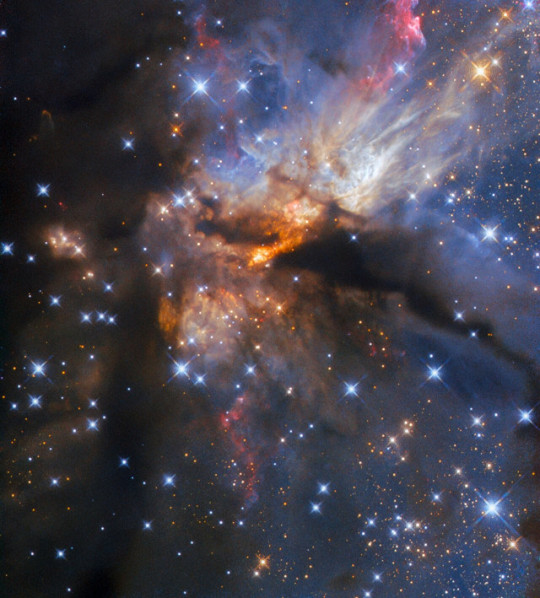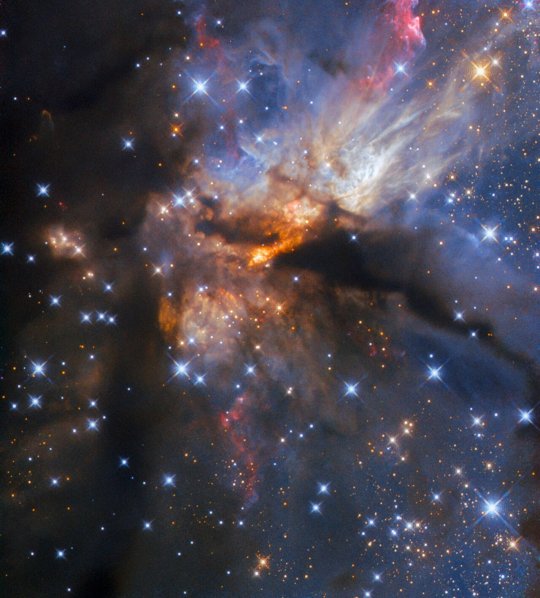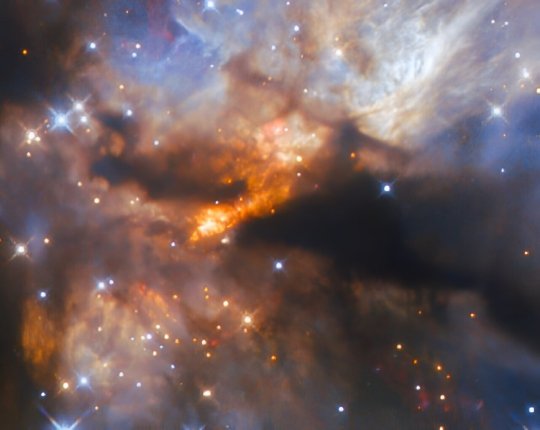#G35.2-0.7N
Text

Massive Star Birth
140 notes
·
View notes
Text

Star Forming Nebula G35.2-0.7N © Hubble
#nasa#hubble#nebula#astrophotography#space#stars#night#galaxy#universe#sky#astronomy#solar system#planet#planets#cosmos
2K notes
·
View notes
Text
Jet-setting through a star formation hotbed!
The glimmering, star-forming region seen in this Hubble view is called G35.2-0.7N. The spectacular light show is caused by a powerful jet of matter ejecting from a very young star:

#astronomy#space#universe#astrophotography#nasa#astro#galaxy#galaxies#hubble#hubble space telescope#telescope#stars#cosmos#cosmology
146 notes
·
View notes
Text
This spectacular image from the NASA/ESA Hubble Space Telescope shows a region called G35.2-0.7N, which lies around 7,200 light-years from Earth in the constellation Aquila. G35.2-0.7N is known as a hotbed of high-mass star formation. The kind of stars that form here are so massive that they will end their lives as destructive supernovae. However, even as they form, they greatly influence their surroundings. At least one B-type star – the second most massive type – lurks within the region pictured here, and a powerful protostellar jet that is launching toward us is the source of the spectacular light show. Protostellar jets are enormous, collimated beams of matter ejected from very young stars called protostars. Collimated simply means that the matter is ejected in parallel (column-like) streams, which in turn means that the jets do not spread out much but extend out very far in relatively straight lines.
0 notes
Text

An image captured by the Hubble Space Telescope depicts the star-forming region cataloged as G35.2-0.7N, in which massive stars form. Protostars are surrounded by cocoons of gas and dust which in turn are inside larger clouds, and that usually makes them invisible. However, one of those protostars near the center of the image is emitting jets of materials that illuminate the region and dig into the gas, allowing some of the protostellar light to escape.
0 notes
Text
I potenti getti delle baby stelle
Questa spettacolare immagine mostra una regione chiamata G35.2-0.7N, nota per essere un focolaio di formazione di stelle ad alta massa. Il tipo di stelle che si formano qui sono così massicce che termineranno la loro vita come supernovae distruttive. Tuttavia, anche quando si formano hanno un forte impatto sull’ambiente circostante.
Almeno una stella di tipo B – il secondo tipo più massiccio –…

View On WordPress
0 notes
Text

Un'immagine catturata dal telescopio spaziale Hubble raffigura la regione di formazione stellare catalogata come G35.2-0.7N, nella quale si formano anche stelle massicce. Le protostelle sono circondate da bozzoli di gas e polveri che a loro volta sono all'interno di nubi più grandi e ciò di solito le rende invisibili. Tuttavia, una di quelle protostelle vicina al centro dell'immagine sta emettendo getti di materiali che illuminano la regione e scavano all'interno del gas permettendo a una parte della luce protostellare di uscire.
0 notes
